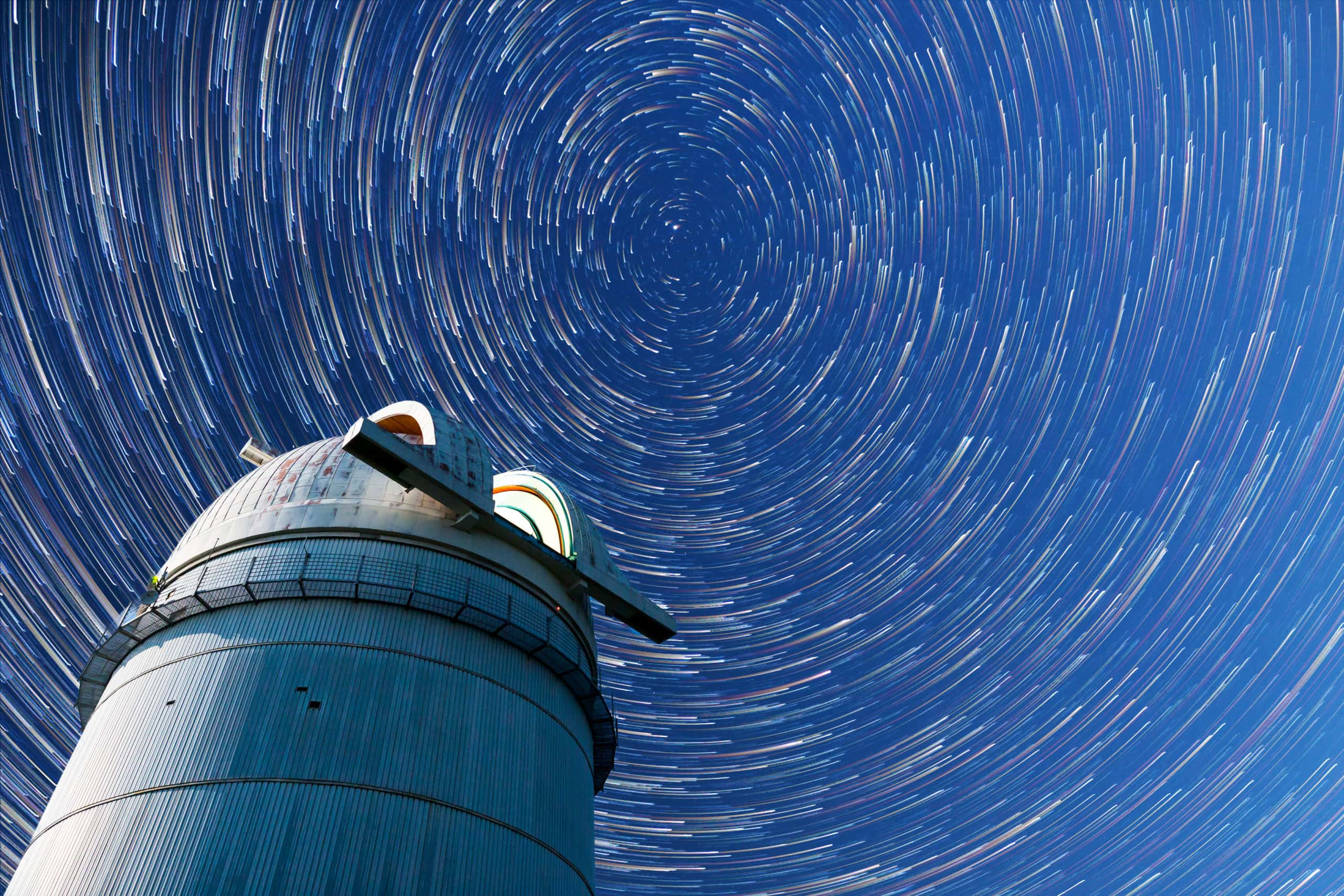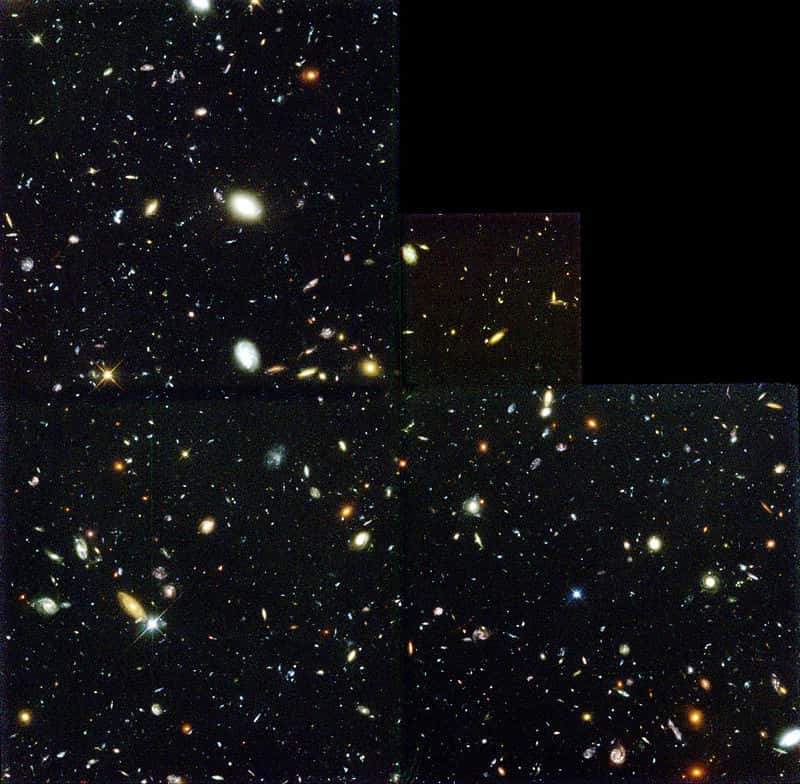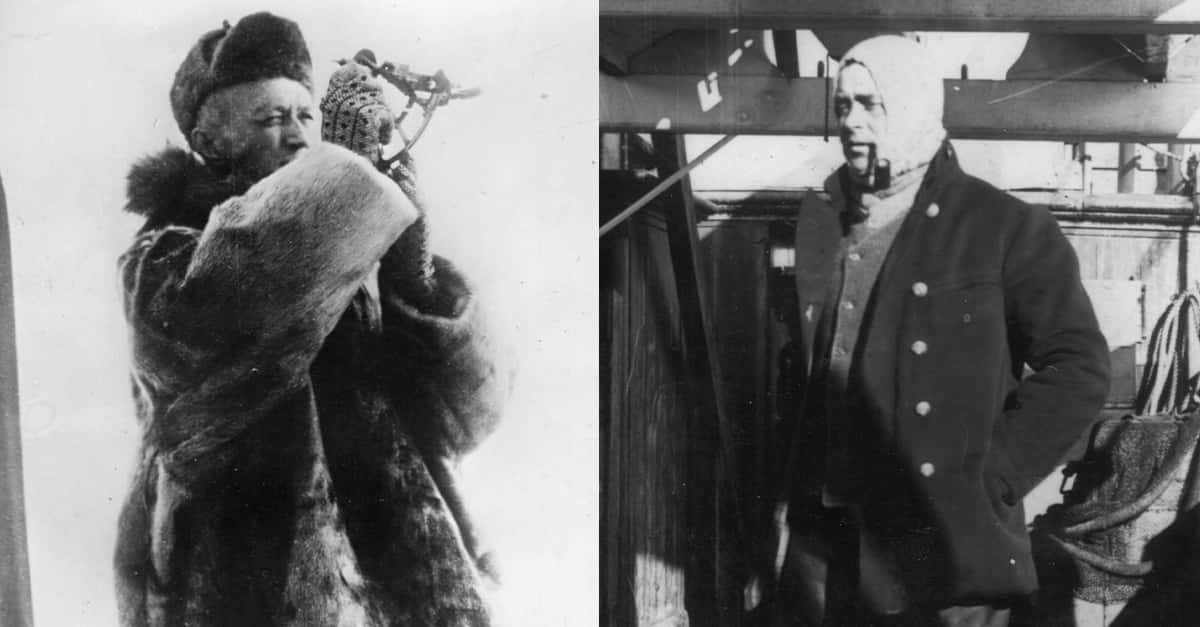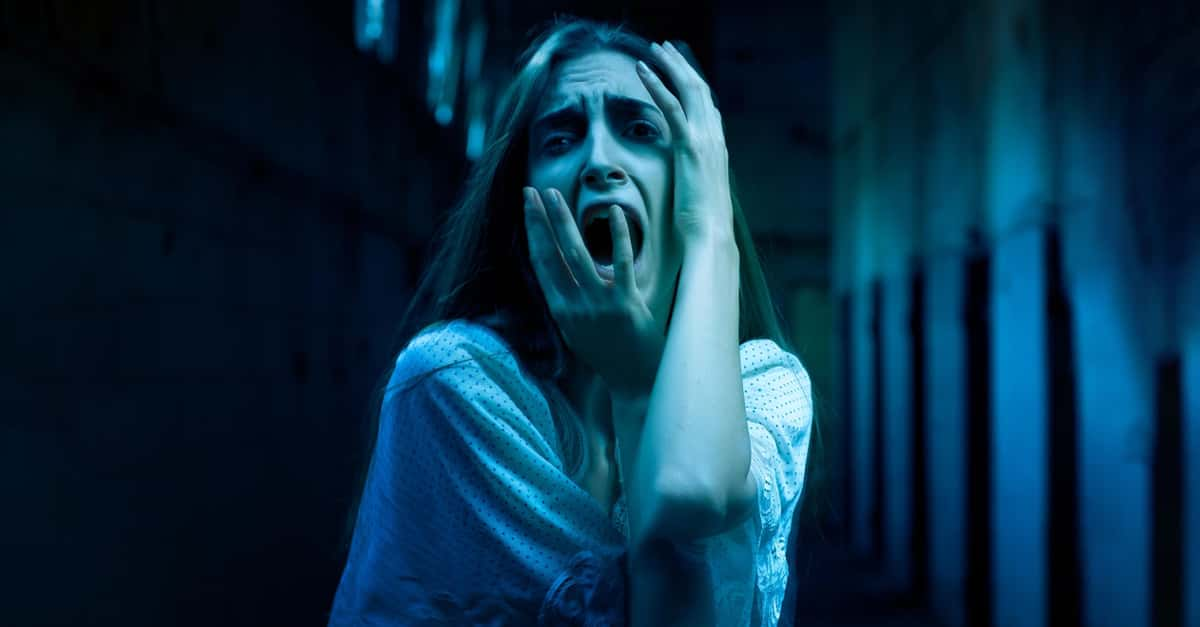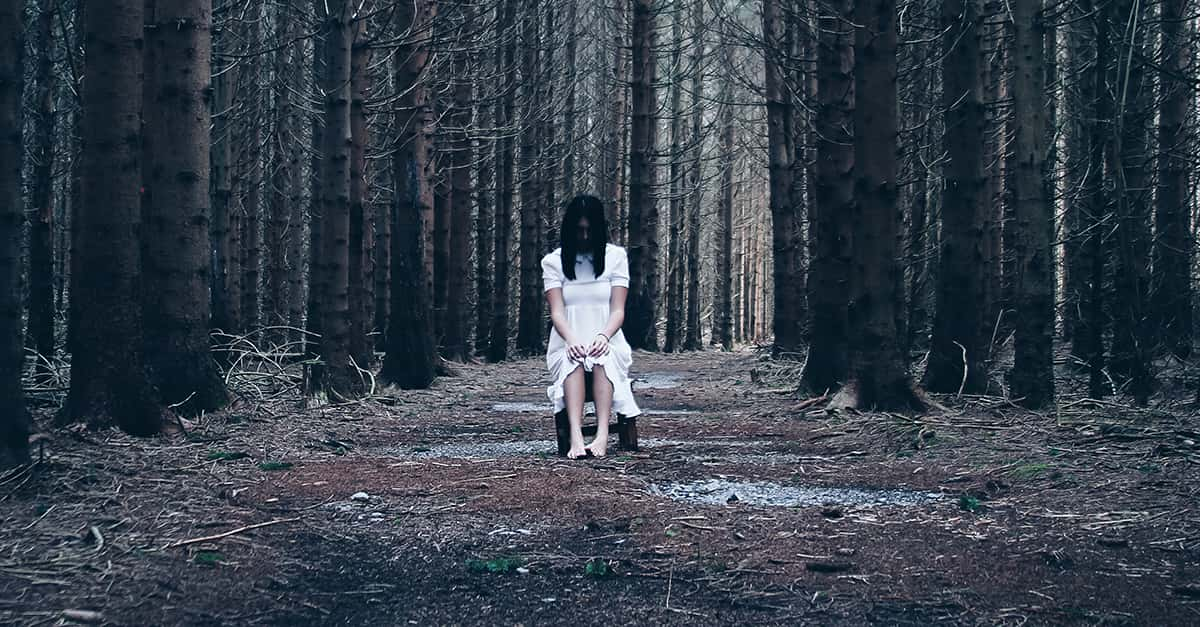Let me start by blowing your mind: The universe is really, really big.
Ok, maybe that didn't blow your mind. Everyone knows that the universe is really, really big. Huge even. But, how big is it really? I could tell you it's ___ light-years across or whatever, but that's not really going to do much. At a certain point, a big number is a just big number. Tell me it's a trillion light-years, tell me it's a quintillion light-years, tell me it's a gazillion-jillion light-years, it all looks pretty much the same in my head.
But there's a picture I can show you that might—just might—give you some idea as to how big the universe really is. It's not some cheesy infographic or artist's rendition of the universe. This is just a picture of the sky, taken by a telescope. It's called the Hubble Deep Field, and it's one of the most remarkable images you'll ever see.
Hubble Bubba
Before we get to the picture, let me just explain the Hubble Space Telescope a little bit. I'm sure you've all heard of it, but what exactly makes it so special? Well, it turns out, putting a telescope in space comes with some very key advantages.
Before Hubble, the best telescopes we had were on mountaintops. They had the least obstructed view of the heavens—but they still had their problems. Clouds were an obvious one. But even on the clearest days, if you were trying to look really far away, our atmosphere could distort the image.
Then there's the fact that any land-based telescope is tethered to this stupid rotating Earth of ours. If you want to see really far away, you need to look at the same spot for a really long time, and the Earth will inevitably get in the way every single day. Not ideal.
That's where Hubble came in. Clouds? Not a problem. Atmosphere? None to speak of. And perhaps most importantly, from its place in orbit, Hubble gets an unobstructed view of the stars. All of these things made it perfect for a very special kind of image. An image that had never been possible before.
Factinate Video of the Day
A Speck In The Sky
It wasn't all smooth sailing at first. When Hubble first launched in 1990, there was an imperfection in the mirror. Whoops. But, three years later, a Space Shuttle mission corrected the problem, and Hubble was ready to join the big leagues.
In 1995, Robert Williams, the director of the Space Telescope Science Institute, decided it was time to see what Hubble could really do. He wanted to study extremely distant galaxies—the kind of galaxies we didn't have the technology to see before. So Williams and his team came up with a plan.
After considering their options, astronomers decided to point the Hubble telescope at this specific point in the sky, right near the Big Dipper:
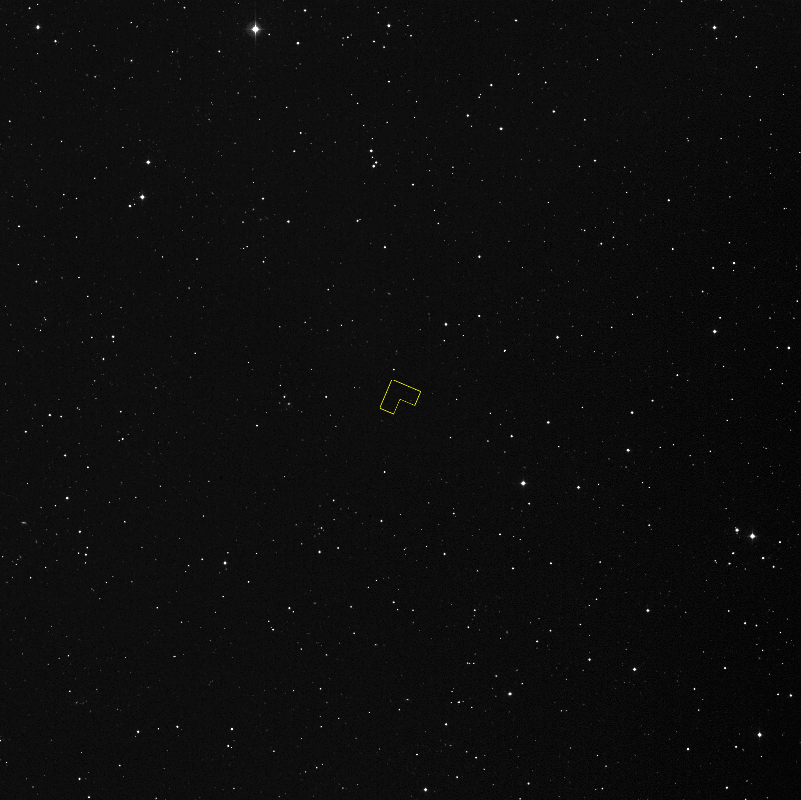 Wikimedia Commons This is the area the Hubble Telescope looked at. For scale, the moon as viewed from Earth would take up about one-quarter of this image.
Wikimedia Commons This is the area the Hubble Telescope looked at. For scale, the moon as viewed from Earth would take up about one-quarter of this image.
Now, two things about this little chevron in the sky: First, as you can see, it's almost completely empty. Mostly just black to our eye, even to most telescopes. Second, it's tiny. Specifically, it's about 1/24,000,000th of the total area of the sky. Yeah yeah, I know what I said about big numbers, but you get it: Really small. Doesn't seem like there'd be much to see in that spot, does there? Well, think again.
In A Galaxy Far, Far Away
Astronomers pointed the Hubble Space Telescope at that tiny speck of black sky for 10 straight days, only taking short breaks to avoid damaging the equipment. During that time, Hubble soaked up all the light it could; light that would be completely undetectable under shorter exposures.
Once the 10 days were up, then came the hard part. I'll spare you the technological mumbo jumbo, but let's just say, space telescopes are complicated, and it took a ton of work to take the data from Hubble and create an image.
But finally, after about a month, the team was ready to release the image—and it was better than anyone ever expected.
This is what the Hubble Space Telescope saw after soaking up light from the same exact point in the sky for 10 days. Hubble Deep Field. Now, at first glance, it might not look that crazy. A bunch of stars? Yeah, so what. I knew the sky was full of stars. But those aren't stars you're looking at.
To our best guess, maybe 20 of those dots are plain old boring stars. The rest of them are entire galaxies. Thousands upon thousands of them.
Just An Empty Spot Among The Stars
Now that we've finally gotten there, let me take you for a walk:
We live on Planet Earth. It's big. It's all any of us have ever known, and none of us have seen all of it. Compared to Jupiter though, the Earth is absolutely tiny. Jupiter is 11 times bigger than our planet, and over 300 times as massive. And still, Jupiter is still a mere 1/10th the size of the Sun.
We've reached the level of the Solar System, but we have to keep going. The Sun is just a single star out of somewhere between 100 and 400 billion stars in the Milky Way, our galaxy. Now, the Milky Way is on the big side as far as galaxies go, but still, on average, a galaxy will have around 100 million stars. Don't worry, our walk is almost over. We've reached Hubble Deep Field.
Even the starriest night you've ever seen doesn't even scratch the surface of how big the universe is. You're just looking at other stars in the Milky Way. That's nothing. Hubble Deep Field looked at the tiniest fraction of the night sky—a speck that looked completely empty—and it saw literally thousands of entire galaxies.
Next time you're looking at the stars, think about that for a second. Think about that tiny speck near the Big Dipper, and the thousands of galaxies it contained. Then look at the rest of the sky. The other 24,000,000 specks that size. All of them are hiding thousands of entire galaxies too.
Like I said: The universe is really, really big.

